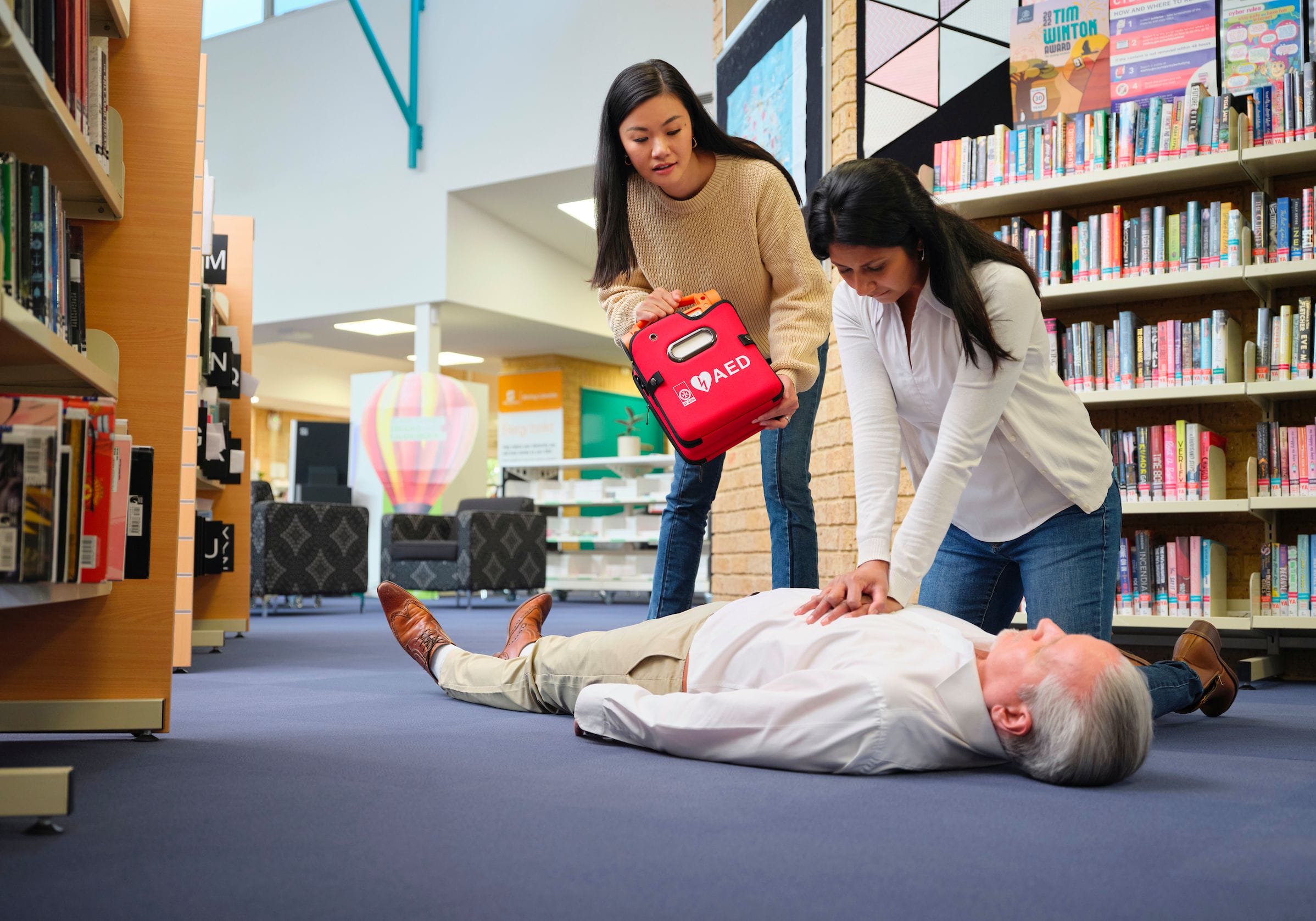Public AED use in out-of-hospital cardiac arrest cases increased during 2021
- In 2021, St John performed resuscitation on 1115 out-of-hospital cardiac arrest (OHCA) patients in 2021 (up from 1086 in 2020), of which 20.6 per cent survived to hospital handover.
- Bystanders provided CPR to 82 per cent of OHCA patients, and AED pads were applied to 157 patients, up 45 per cent over five years.
- In the cases when community AED shocks were deployed, patients’ survival percentages more than doubled.
St John WA welcomes evidence two of the major drivers to surviving out-of-hospital cardiac arrest (OHCA) – bystander CPR and bystander use of defibrillators – improved in 2021.
St John performed resuscitation on 1115 cardiac arrest patients in 2021 (up from 1086 in 2020), of which 20.6 per cent survived to hospital handover (230 patients had a pulse on arrival at emergency departments, up from 224 in 2020).
Encouragingly, bystanders provided CPR to 82 per cent of OHCA patients – an increase of 2 per cent on 2020, and an increase of 10 per cent over five years. Furthermore bystanders applied Automated External Defibrillator (AED) pads to 157 patients, up from 134 in 2020 and 86 in 2017 (a 45 per cent increase over the past five years).
“Community AEDs are unequivocally associated with improved survival and where a shock was delivered by a community AED, 53.6 per cent of patients achieved Return of Spontaneous Circulation (ROSC) at ED compared to 20.6 per cent of cases in general, and 46.4 per cent of patients survived to 30 days post event compared to 10.5 per cent of cases in general,” St John Head of Clinical Services Rudi Brits said.
While 30-day survival for out-of-hospital cardiac arrest patients decreased slightly to 10.5 per cent as part of a downward trend in recent years (11.6 per cent in 2020, and 12.5 per cent in 2019), this has been in the context of the COVID-19 pandemic. A potential factor in survival remaining relatively robust amid the challenges of recent years is the continued strengthening of the Chain of Survival for cardiac arrest patients.
The Chain of Survival is the sequence of interventions that together improve patients’ chances of survival in an out-of-hospital cardiac arrest. Bystanders calling Triple Zero (000) for help, providing CPR, and using a publicly available AED make up the first three important steps in the minutes before paramedics arrive, with ambulance care and hospital care being the last two steps.
“St John’s efforts to strengthen the Chain of Survival through public messaging is clearly working,”
“While COVID-19 in 2021 caused intermittent periods of restriction, lockdown and community uncertainty, patient survival and bystander CPR rates remained robust, with AED use continuing to grow.
“For every minute that passes without receiving a resuscitation attempt in the form of CPR or an AED shock, a cardiac arrest patient’s chance of survival decreases by 10 per cent, with the first five minutes proving the most critical.”
St John has developed a network of more than 7000 registered AEDs over the past decade.
Sadly 69 per cent of OHCA events occur in a private home, where they often go unwitnessed, have no access to an AED and/or the person delivering CPR has no immediate help and becomes fatigued.
“We at St John remain mindful of those who did not survive OHCA in Western Australia and we continue our efforts to improve pre-hospital systems and practice, with our median ambulance response times to OHCA calls remaining under 10 minutes in the metro area and improving to being less than 13 minutes in rural and remote areas,“ Mr Brits said.
“Sadly, the number of patients presenting with a shockable initial arrest rhythm – who generally have much higher survival – dropped to 258 adults as compared to 282 in 2020. The reason for this change is not clear, but it will be monitored going forward.”
This Out of Hospital Cardiac Report was prepared through a collaboration with the Pre-hospital, Resuscitation and Emergency Care Research Unit at Curtin University as an extension of the work of the late Professor Ian Jacobs, who had the vision and foresight to establish the first OHCA registry in the Australia and New Zealand region.
The registry compiles cardiac arrest data associated with the dispatch system, ambulance care records and patient care journeys through the hospital systems.
